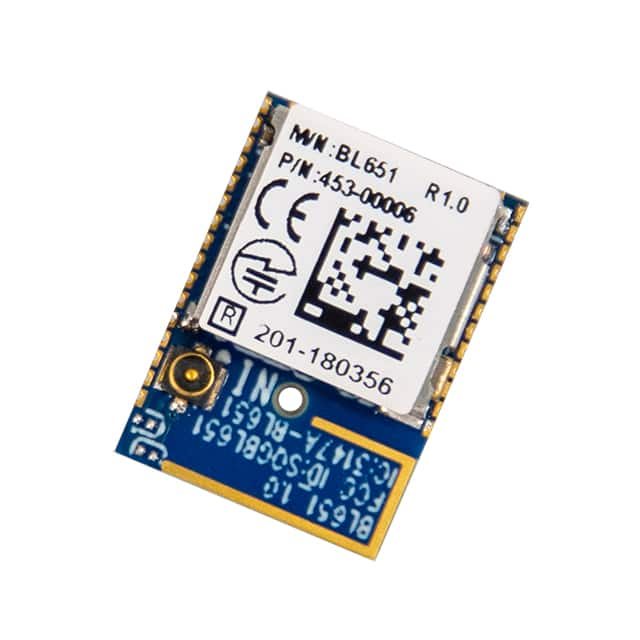BL651 Series, RF Transceiver Modules and Modems
Results:
5
Manufacturer
Series
Antenna Type
Current - Transmitting
RF Family/Standard
Frequency
Operating Temperature
Serial Interfaces
Mounting Type
Power - Output
Sensitivity
Package / Case
Data Rate
Memory Size
Current - Receiving
Voltage - Supply
Modulation
Utilized IC / Part
Protocol
Results remaining:5
Applied Filters:
BL651
About RF Transceiver Modules and Modems
RF Transceiver Modules are essential components used for transmitting and receiving radio frequency signals across a wide range of applications. These modules are designed to operate within various RF families or standards, including Bluetooth, Cellular, General ISM, GPS, Navigation, SiBeam, WiFi, and 802.15.4. They support a broad frequency range spanning from 70MHz to 65GHz, allowing for flexibility in communication across different RF bands. In addition to their frequency range, RF Transceiver Modules also offer diverse data rate capabilities, covering a range from 600 bps (bits per second) to 12.3Gbps (gigabits per second). This wide data rate spectrum enables these modules to accommodate varying communication requirements, from low-speed applications to high-speed data transmission. Furthermore, RF Transceiver Modules provide a configurable power output, ranging from -10dBm to 54dBm. This adjustable power output capability allows for optimized signal transmission based on specific application needs, ensuring efficient and reliable communication over both short and long distances. These modules are widely utilized in a multitude of wireless communication systems, including but not limited to IoT devices, wireless sensor networks, mobile communication, satellite communication, and wireless local area networks (WLANs). Their versatility and adaptability make them indispensable for enabling seamless RF signal transmission and reception in diverse real-world scenarios. In summary, RF Transceiver Modules serve as critical components for transmitting and receiving radio frequency signals across a broad spectrum of applications. With support for various RF families, a wide frequency range, adaptable data rates, and configurable power output, these modules play a pivotal role in facilitating efficient and reliable wireless communication in modern technological landscapes.



